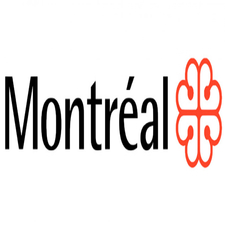SGPMRS
Type of resources
Topics
Keywords
Contact for the resource
Provided by
Formats
Representation types
Update frequencies
status
-

This data set contains the sightings of coyotes documented by the City of Montreal since 2017. Most of this information comes from citizen observations that were reported to the City of Montreal. They are collected as part of the implementation of City of Montreal's coyote management plan, unveiled in 2018. Its objective is to promote coexistence with coyotes living in urban areas by focusing on public education, methods of modifying the behavior of coyotes and on targeted interventions aimed at aggressive animals to ensure the safety of the Montreal population.**This third party metadata element was translated using an automated translation tool (Amazon Translate).**
-

Extent of plant cover formed by trees on the territory of the City of Montreal. The canopy is the summation of the projections to the ground of each tree crown or group of trees over 3 meters in height. It is represented on surfaces, even for isolated trees. No cells are used in this layer.**This third party metadata element was translated using an automated translation tool (Amazon Translate).**
-

Location of community gardens on the territory of the City of Montreal. A community garden is a vegetable garden composed of several gardens, each one allocated and cultivated by a citizen or a family.**This third party metadata element was translated using an automated translation tool (Amazon Translate).**
-

The boroughs of the City of Montreal benefit from more than 1,495 parks that extend over an area of more than 6,412 ha. This data set represents all the parks and public spaces identified and illustrates their surface polygons in the context of the urban fabric of the territory. The data is not representative of the parks of the linked cities which are only partially represented. The boundaries of parks and public spaces generally follow the cadastre, but cannot be used as a legal reference to accurately locate the location of a park. The data provided in this data set is for representation purposes only. __Interact with visualization data [View of Montreal's parks and sports facilities] (https://vuesurlesdonnees.montreal.ca/pub/single/?appid=8636bd4b-d2b1-48a0-a790-05331b84af2b&sheet=6bcbf9ba-d7b0-4dfb-a11d-3e075504b5e9).__**This third party metadata element was translated using an automated translation tool (Amazon Translate).**
-

The urban furniture data set in large parks includes a complete inventory of these, most of which was updated in 2013. Among other things, in the form of georeferenced points, they include benches, barbecues, bollards, sports equipment, drinking fountains, trash cans, bike racks, bike racks, picnic tables and some other elements of large parks. The [boundaries of large parks] (/city-of-montreal/grand-parcs-parks-parks-of-boroughs-and-public-spaces) are also available on the portal.**This third party metadata element was translated using an automated translation tool (Amazon Translate).**
-

This file contains polygons delimiting ecoterritories. The City of Montreal identified 10 sectors, called ecoterritories, where the protection and enhancement of the natural spaces located there were deemed to be a priority. These are vast territories of more than 15 hectares, bringing together existing protected areas (large parks, nature reserves, etc.), urbanized areas as well as natural areas that still need to be protected and developed. Ecoterritories were established by the Policy for the Protection and Development of Natural Environments (City of Montreal, 2004), which are recognized in the Montreal Urban Plan. This update of the ecoterritories follows the adoption of the new [Plan of land use and development of the agglomeration of Montreal] (https://montreal.ca/articles/schema-damenagement-et-de-developpement-de-lagglomeration-de-montreal-18112) and its entry into force on April 1, 2015.**This third party metadata element was translated using an automated translation tool (Amazon Translate).**
-

This data set contains the polygons delimiting the natural wastelands of the Montreal agglomeration. The boundaries of the wastelands and their type are the result of an analysis of aerial photos and/or of field visits and/or of particular ecological studies. These are constantly updated in accordance with the advancement of knowledge in the community. Some types and their limits may therefore be imprecise.**This third party metadata element was translated using an automated translation tool (Amazon Translate).**
-

Data set presenting public ash trees protected from emerald ash borer by TreeAzin injection treatment since 2014 by the City of Montreal. For more information on ash injections, consult the [information page dedicated to the fight against emerald ash borer] (https://montreal.ca/articles/agrile-du-frene-pourquoi-abattre-mon-arbre-17766). Tree plantations are available via the dataset presenting [trees in the public domain] (https://donnees.montreal.ca/dataset/arbres) which is updated by the City's boroughs.**This third party metadata element was translated using an automated translation tool (Amazon Translate).**
-

This data set contains the polygons delimiting the woods of the agglomeration of Montreal. The boundaries of the woods and their composition are the result of an analysis of aerial photos and/or of field visits and/or of particular ecological studies. These are constantly updated in accordance with the advancement of knowledge in the community. Some plant communities and their limits may therefore be imprecise.**This third party metadata element was translated using an automated translation tool (Amazon Translate).**
-

This data set contains the polygons delimiting the wetlands of the Montreal agglomeration. These were updated as part of the development of the [Regional Plan for Humid and Hydric Environments (PRMHH)] (https://montreal.ca/articles/un-plan-pour-proteger-les-milieux-humides-et-hydriques-67104) for the agglomeration of Montreal. They illustrate the wetlands, the type of environment and the conservation choices that have been assigned to them to meet the objectives of the Regional Plan. A visualization of the data is possible on the [interactive map] (https://experience.arcgis.com/experience/87e6da34dc3348a1a5e3f1014c266242) associated with the PRMHH. **This third party metadata element was translated using an automated translation tool (Amazon Translate).**
 Arctic SDI catalogue
Arctic SDI catalogue